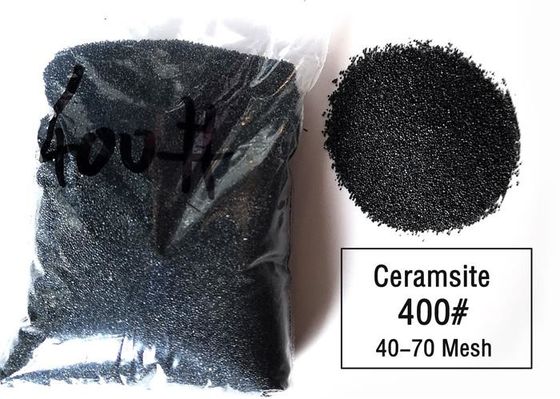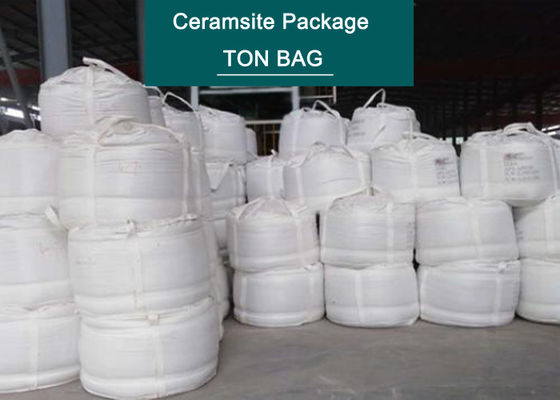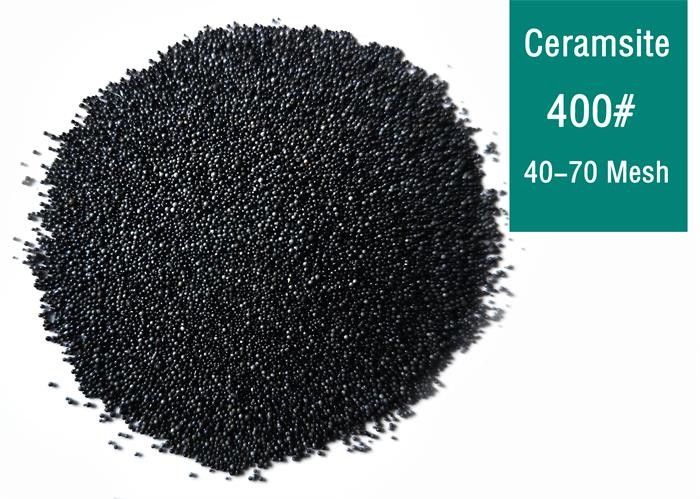3.3g/Cm3 Casting 400# 70 Mesh Ceramic Foundry Sand
Product Details:
| Place of Origin: | Zhengzhou |
| Brand Name: | Zhengtong |
| Certification: | N/A |
| Model Number: | 14Mesh-270Mesh |
Payment & Shipping Terms:
| Minimum Order Quantity: | 25 MT |
|---|---|
| Price: | Contact us |
| Packaging Details: | 25kgs bags +Ton bags |
| Delivery Time: | 5-8 working days |
| Payment Terms: | L/C, T/T |
| Supply Ability: | 100000mt per year |
|
Detail Information |
|||
| Materiall: | Ceramsite | Main Chemical Index: | Al2O3 75% Min. SiO2 18% Max. |
|---|---|---|---|
| Refractoriness: | 1800 ℃ Min. | Bulk Density: | 1.65-1.95g/cm3 |
| True Density: | 3.3g/cm3 | PH Value: | 7-8 |
| Thermal Expansion Rate: | 0.13% (1000℃, Heating 10 Minutes) | Angle Coefficient: | ≤ 1.1 (Extramely Like Spheric) |
| Highlight: | 70 Mesh Ceramic Foundry Sand,400# Ceramic Foundry Sand,3.3g/cm3 Ceramsite Sand |
||
Product Description
Ceramsite Sand 400# 40-70 Mesh for cold or hot box process castings in foundry industries
- Description
Ceramic foundry sand, also called ceramsite sand, is made of high-quality bauxite as raw material through melting, screening and blowing. It has the advantages of good surface finish and good air permeability. It is a new type of casting material suitable for precision casting, coated sand, self-hardening sand, etc. The use of ceramsite sand can significantly improve the defects caused by the original quartz sand, significantly reduce mechanical and chemical sticking of sand, and at the same time reduce the burden of sand cleaning by employees, and it is not easy to produce defects such as sand inclusion, sand washing, and pores. Since its refractoriness is close to that of chromite sand, Ceramic foundry sand has been widely used in the casting of original chromite sand.
- Specification
Chemical Index
| Index | Al2O3 | SiO2 | Fe2O3 | TiO2 | K2O+Na2O | CaO+MgO | L.O.I |
| Content | 75% Min. | 18% Max. | 3% Max. | 3.5% Max. | 1% Max. | 1% Max. | 0.3% Max. |
Technical Index
| Index | Refractories | Bulk Density | True density | Angle coefficient |
| Content | 1800 ℃ | 1.65-1.95g/cm3 | 3.3g/cm3 | 1.1 Max. |
| Index | PH Value | Moisture | Mud Content | Thermal expansion rate |
| Content | 7-8 | 0.1% Max. | 0.1% Max. | 0.13% |
|
μm Mesh |
1700 | 850 | 600 | 425 | 300 | 212 | 150 | 106 | 75 | 53 | Pan | AFS | # |
| 10 | 20 | 30 | 40 | 50 | 70 | 100 | 140 | 200 | 270 | ||||
| 20/40 | ≤ 2 | 15-40 | 30-55 | 15-35 | ≤ 3 | 15-25 | 200# | ||||||
| 30/50 | ≤ 10 | 25-45 | 35-55 | 5-15 | ≤ 5 | ≤ 2 | 25-29 | 300# | |||||
| 40/70 | ≤ 10 | 25-45 | 20-40 | 15-25 | ≤ 7 | ≤ 5 | 35-39 | 400# | |||||
| 40/100 | ≤ 3 | 10-25 | 25-40 | 25-45 | 10-20 | ≤ 10 | ≤ 5 | 45-55 | 500# | ||||
| 50/100 | ≤ 10 | 10-30 | 30-50 | 15-35 | ≤ 15 | ≤ 5 | ≤ 2 | ≤ 1 | 55-65 | 600# | |||
| 50/140 | ≤ 8 | 10-25 | 20-40 | 20-40 | 5-20 | ≤7 | ≤ 2 | ≤ 1 | 60-70 | 650# | |||
| 70/140 | ≤ 10 | 10-25 | 25-45 | 15-35 | ≤15 | ≤ 5 | ≤ 2 | 75-85 | 750# | ||||
| 100/200 | ≤ 3 | 10-30 | 35-55 | 15-35 | ≤10 | ≤ 5 | 95-115 | 1000# | |||||
| 140/270 | ≤ 5 | 5-25 | 40-60 | 25-40 | ≤15 | 155-175 | 1500# |
Features:
Ceramic foundry sand has the below advantages:
- High temperature resistance
- Easy collapse
- Good grain shape
- Low crushing rate
- Strong reusability
The cost performance far exceeds that of chrome ore and zircon sand.
It is an ideal modeling material for casting carbon steel and alloy steel castings, and has been recognized by casting experts.
Application:
The cold box method refers to a resin sand forming process that is instantaneously formed at room temperature by means of gas or aerosol catalysis/hardening.
The characteristics of this process are: the core sand can be used for a long time, the mold release time is short, the production efficiency is high, and the energy consumption is low. It is suitable for mass production of cores and is widely used in the automotive diesel engine industry.
Diesel engine castings, such as cylinder heads, intake and exhaust pipes, etc., have complex core shapes and small partial cross-sectional areas, prone to false shots, fractures, etc., or veins appear in the castings due to the large expansion of quartz sand. The probability of defects such as sticky sand and pores is also relatively high. Using orb sand or a mixture of orb sand and quartz sand in proportion, the amount of resin added is reduced by 20-30%, and the above defects have been significantly improved. At the same time, the collapsibility of the sand core is very good, reducing the cleaning workload. Therefore, only in recent years, almost all large-scale diesel engine casting foundries have adopted the Ceramsite sand cold core box process.
![]()
Full applications of Ceramsite sand as below:
Lost Foam casting
Hot core box casting
Cold box process casting
Self-setting sand
Investment casting
Large steel casting
Precision casting
Drainage sand
Refractory Coating
3D printing






